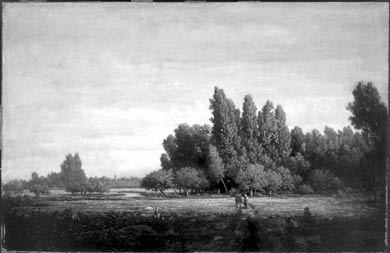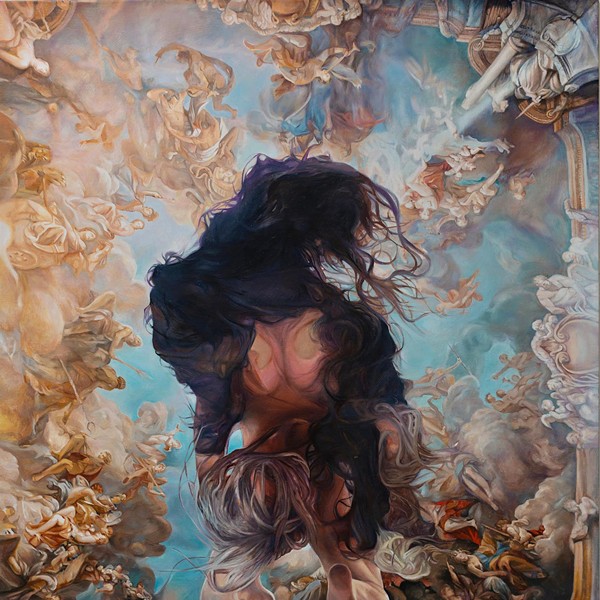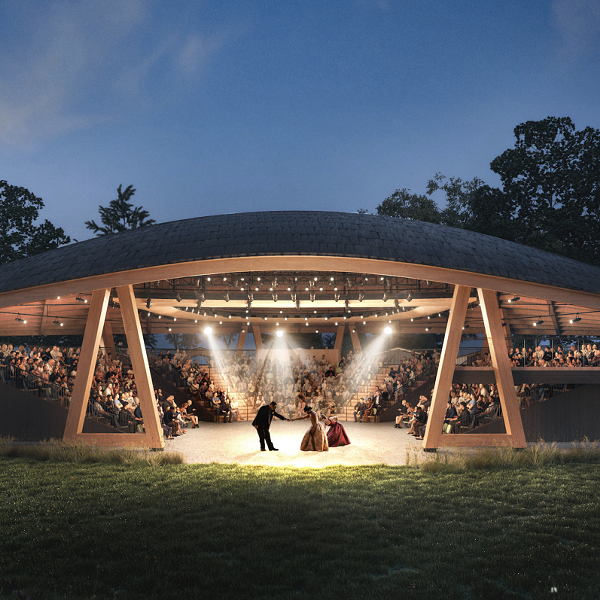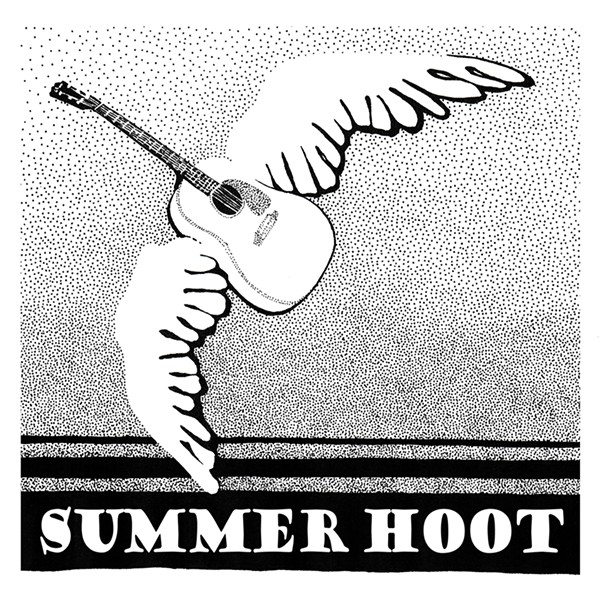For all its obvious charms, there's something naggingly inert about painting-the idea of creating something intended just to hang mutely on the wall for people to look at can seem, from a certain perspective, an oddly impotent waste of time. Why bother? Well, for one thing, painting can be the vehicle for all sorts of transcendent experiences, helping us to understand ourselves and the world in a uniquely visual/visceral way. Two current exhibitions in the area amply help to demonstrate the fugitive truth to be found in the practice of painting.
Now at the New York State Museum in Albany is a really wonderful exhibition of paintings from the Barbizon School-no, not the place you go to learn cosmetology-a loosely affiliated group of French painters in the mid-19th century who at one time or another each explored the rustic environs of that small hamlet, about 35 miles south of Paris.
No other artist in this show demonstrates quite the range or originality of Camille Corot, whose expansive, inspired career stretched from the 1820s all the way to the 1870s, when the old dog refused to stop learning new tricks. His exacting, directly observed early studies of ancient ruins near Rome give way to fresh, bright blazes of paint in his proto-Impressionist, plein-air views of the Barbizon landscape, which in turn surrender to the more abstracted, loosely handled works of his late career, when he relied upon his half-century of experience in the landscape to produce innovative views entirely from memory.
While the other Barbizon artists have largely been overshadowed by the more startling (and more openly modern) achievements of the Impressionists, in their own time and place, these artists staged something of a frontal assault on the status quo of academic landscape by emphasizing (a full generation before Impressionism) the importance of direct encounter with nature, rather than simply reworking the formulae of the old masters.
Today, these works look at first glance like old-fashioned, fuddy-duddy relics from great-grandma's attic, but in their day they made an important statement. Théodore Rousseau's Edge of the Woods at Monts-Gard was submitted in 1854 as a protest painting to Emperor Napoleon III, drawing attention to the steady deforestation that threatened the natural treasures of the French countryside, a direct result of the insatiable material needs of the Industrial Revolution.
The most prominent member of the Barbizon group was certainly Jean-François Millet. The son of a Norman farming family, he was intently aware of the havoc being wreaked on agricultural workers as the influx of technology and capital transformed rural work. His painting regularly focused on the realities of modern rural life, the nobility of labor, and the plight of those displaced from their land and reduced to poverty by industrialized agriculture. The exhibition includes an etching version of his most famous work, The Gleaners, although the wall text accompanying it glosses over the artist's militant, critical politics and the significance the picture had when first exhibited at the Salon of 1857. This omission cancels out the potential frisson in the exhibition between Millet's work and the work of more conservative, bourgeois, gentleman painters like Henri-Joseph Harpignies, who seemed more content to produce an arty, mythologized vision of Nature than to challenge the political and social realities of the day.
To the contemporary visitor, the Barbizon show could easily seem like a quaint visit to the past-it makes a world of difference to know about the shifting politics of the Parisian artworld, the new economic realities of the period, and the general historical context, in which case the whole Barbizon enterprise takes on a much more vivid significance. As somebody somewhere once said, though, "context is everything," and that somebody was right. One hundred and fifty years ago, the well-worn tradition of Western painting was still something to be challenged from within. The fundamental concept of defining painting as the two-dimensional framing of experience, intended to hang mutely on the wall of a gallery or some other interior space was simply the accepted practice in the 19th century (even by the boisterous Impressionists).
Of course since then, there have been enormous upheavals in the artworld, from Duchamp's readymades that recontextualized everyday objects into art, to the birth of performance art, to...well, you can pretty much name it. Today, it seems even more important to think about the perceived boundaries of artmaking than it is to simply worry about a painter's style, per se. An exhibition now on view at The Fields Sculpture Park at Art Omi in Ghent amply demonstrates the potential of this new mindset.
Public Notice: Painting in the Sculpture Park, curated by Sabine Russ and Gregory Volk, playfully calls painting out of the arid white cube spaces that it normally inhabits, and takes it outside for a stroll. The curators invited six different artists (or artist-teams) to create work for a series of 12x16-foot billboard-sized paintings, splayed out in a row across the edge of a gently modulating meadow on the Art Omi grounds. Where the revolutionary move of the Barbizon painters was to take their canvases out to paint them directly before nature, only to bring the resulting work back inside for exhibition in the gallery context, here painting has been installed as part of the landscape-and it promptly devours the images, as the sheer scale of the land, the sky, and the horizon dwarf even these huge paintings.
Even so, the work is drawn into an interesting dance with nature. Mike Ballou's Billboard, with imagery lifted from a tacky, mass-produced placemat of a scene in the country, incorporates an empty oval opening in the top center of the painting. He's hung bird feeders on the support structure behind the work to encourage birds to fly through the large hole, injecting a bit of real nature back into the ham-handed placemat imagery.
Carrie Waldman, a part-time Hudson resident known for her vivid, intimately scaled paintings of flowers executed in egg tempera, has here blown up an image from one of her paintings of daisies sharply contrasted with a bright, electric blue background. In this outdoor setting, the intense color relationships of the work fade in and out with the variable light produced as clouds pass across the sun. Wait patiently, and you can catch the moment when the flower images "pop," seemingly springing out from their billboard backdrop.
Sitting on the hill overlooking these paintings, I realized that the breathtaking Columbia County rural setting that frames them ultimately wins out simply because the landscape itself is explicitly not an image, but is the very substance of living experience. The vividness of this experience is what drove the Barbizon artists out to the countryside to discover what art should be about in the first place, and their struggle was to find some means to record what was important to them about that experience. Today's artists confront it more directly (at least in this exhibition), but also from a more media-saturated experience.
While it seems that in our contemporary reality image regularly trumps substance, looked at from a larger perspective, that's simply not the case-a deep realization made possible by this unexpected encounter with painting in, of all places, a sculpture park.

















